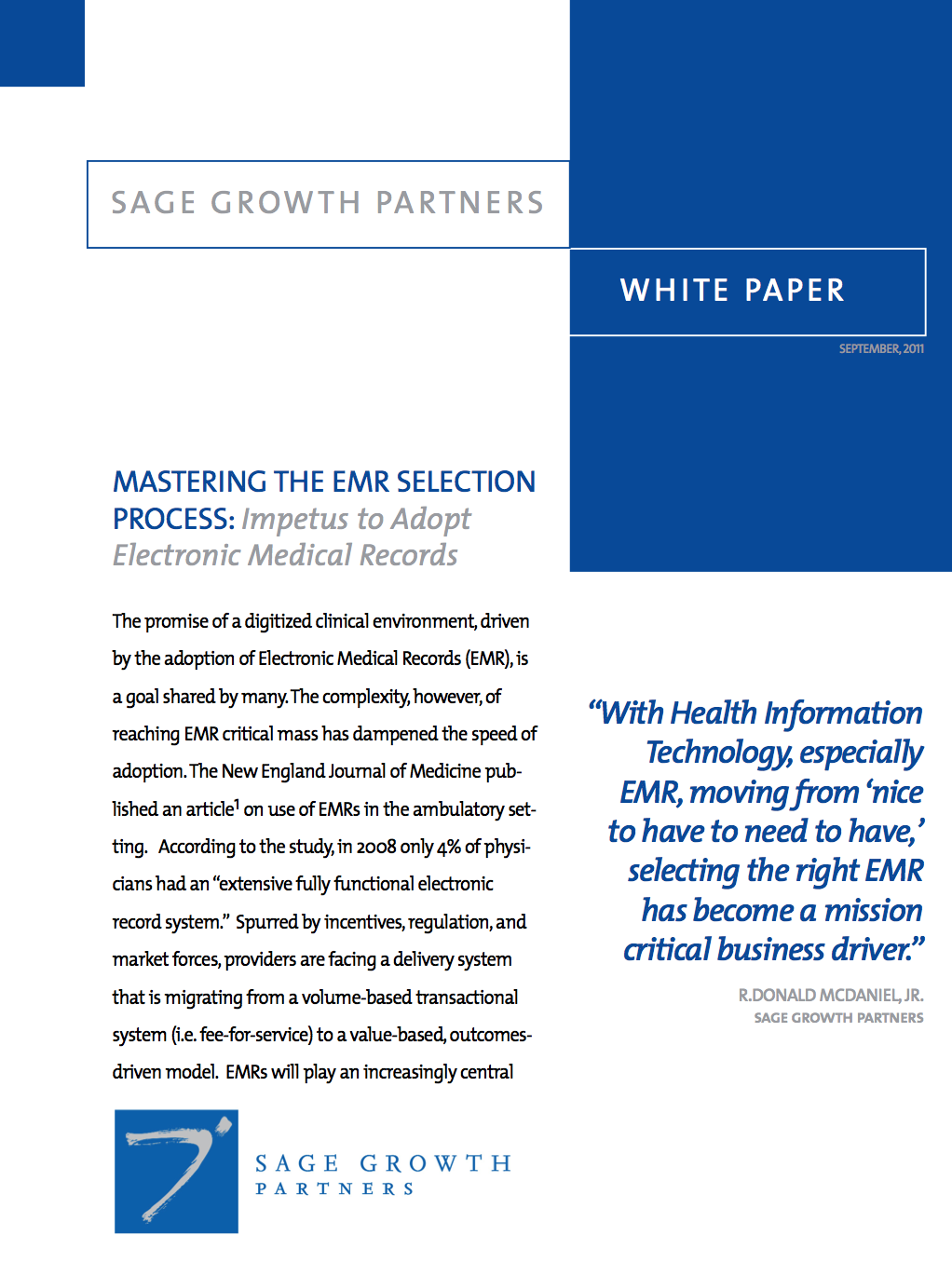This white paper explores the challenges and opportunities associated with the adoption of Electronic Medical Records (EMRs) in the healthcare industry. It highlights the slow pace of EMR adoption despite the promise of a digitized clinical environment and the influence of incentives, regulations, and market forces driving the transition from a volume-based to a value-based healthcare system. The paper emphasizes the critical role of EMRs in delivering value and evidence-based care, discusses the risks of selecting the wrong EMR system, and provides valuable lessons and steps for successfully navigating the EMR selection process.
Key Learnings:
- Slow EMR Adoption: Despite the aspiration for a digitized clinical environment, the adoption of EMRs in healthcare has been slow, with only a small percentage of physicians having fully functional electronic record systems in the past.
- Transition to Value-Based Care: The healthcare industry is undergoing a transformation from a fee-for-service model to a value-based, outcomes-driven approach, where EMRs play a central role in capturing, managing, and reporting on the quality of care.
- Government Incentives: The government has provided substantial incentives for EMR adoption, which is expected to drive increased uptake. However, selecting the right EMR system is crucial, as many practices are replacing existing systems due to poor functionality and concerns about corporate viability.
- EMR Selection Process: The white paper outlines a structured approach to selecting the right EMR system, including establishing a selection team, creating requirements definitions, narrowing the vendor field, conducting vendor day and site visits, and negotiating and selecting the final vendor.
- Vendor Selection: Selecting the right EMR vendor is not just about technology but also about evaluating the vendor’s stability, resources, and ability to support the practice’s goals in an evolving healthcare landscape. The vendor’s wherewithal is a critical consideration alongside the technology itself.






